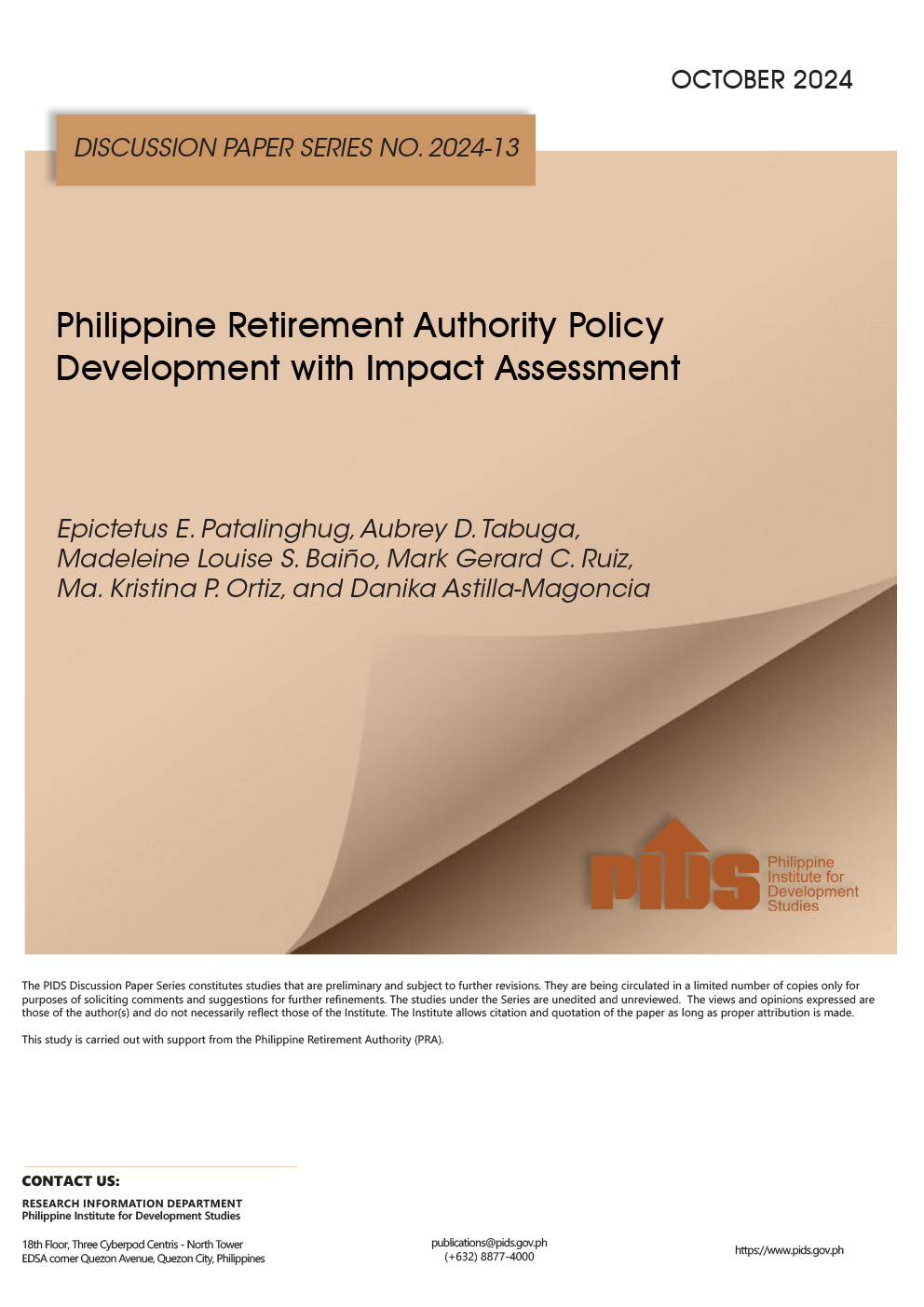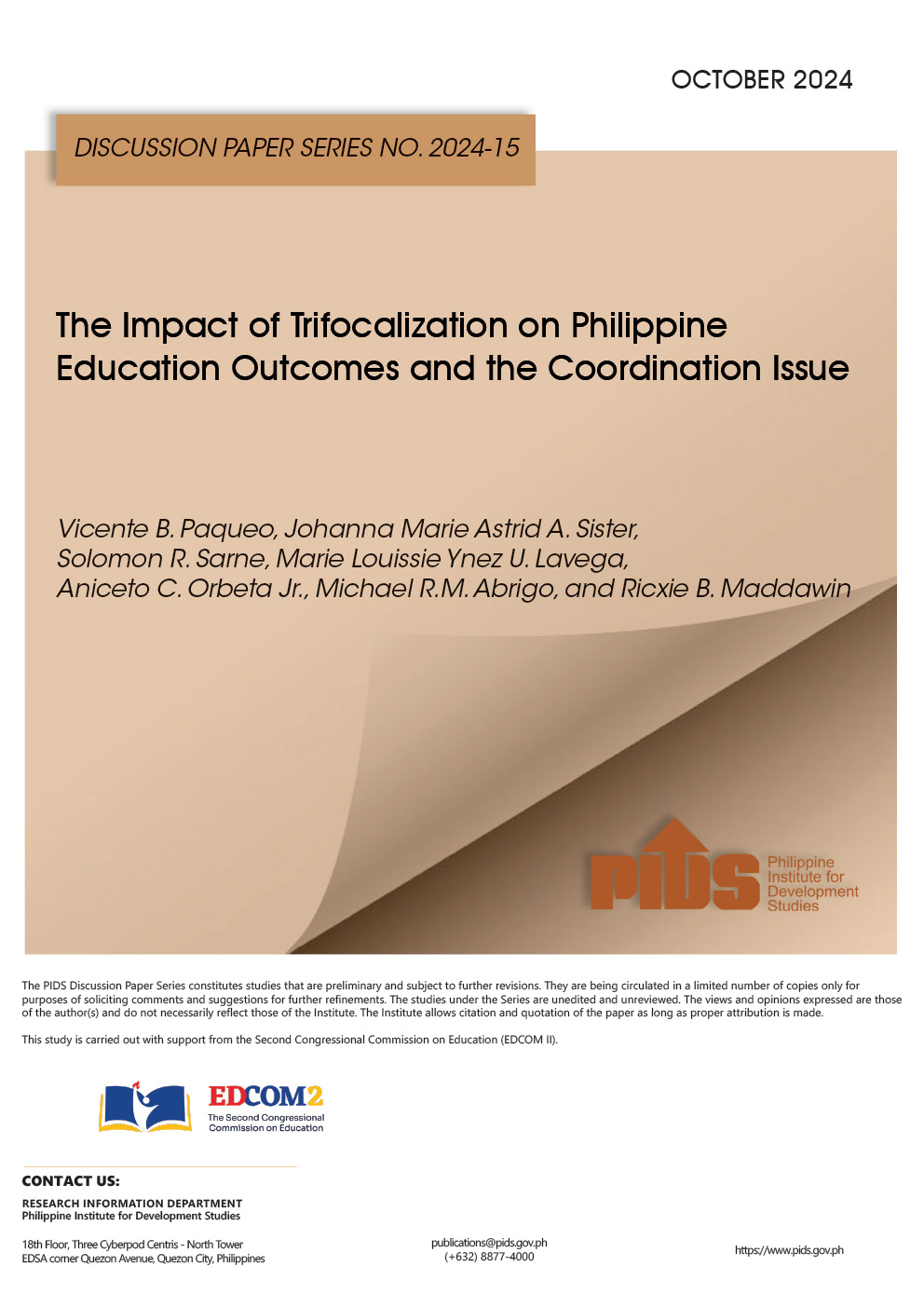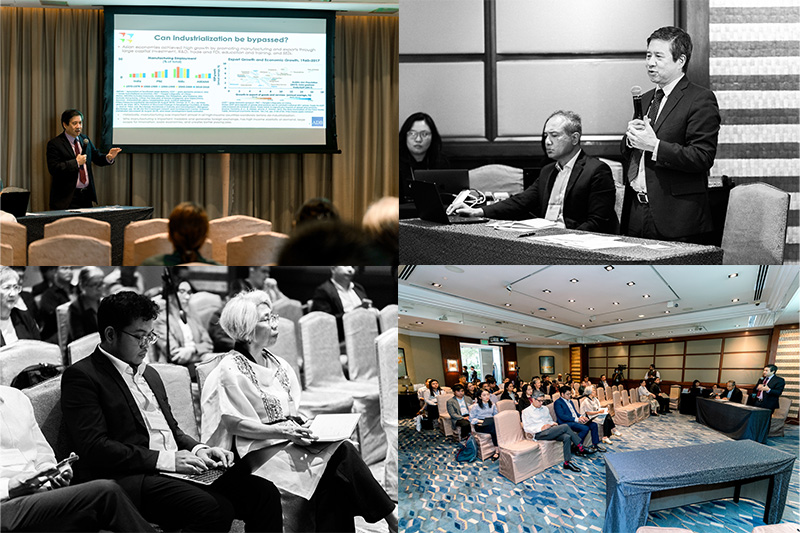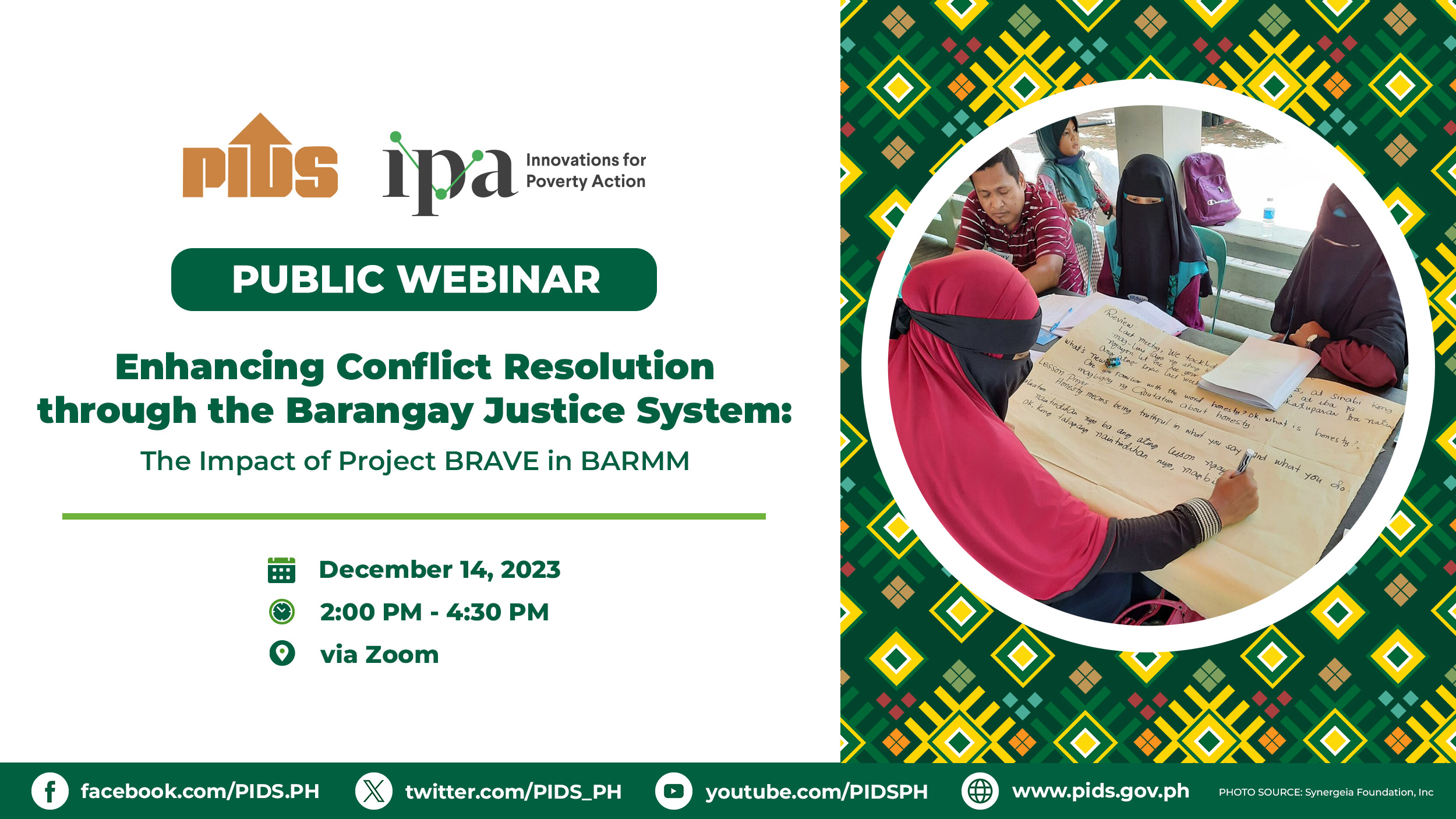THE decline in the country’s GDP growth this year will be deeper than initially estimated by the government, said Ateneo de Manila University’s School of Social Sciences dean, who projected that GDP will contract by as much as 4.4 percent due to the coronavirus 2019 (Covid-19) pandemic.
The uncertainty will continue to create market jitters even after the lockdown, allowing the economy to operate at 70 percent capacity on the back of weak consumption spending, according to Dean Fernando T. Aldaba.
In a webinar sponsored by the Philippine Economic Society, AdMU and the University of the Philippines School of Economics (UPSE) on Monday, Aldaba said GDP growth could post -2.7 percent to -4.4 percent this year, an optimistic scenario.
“The great lockdown, as we call it, [is] the worst recession since the Great Depression, far worse than the Global Financial Crisis,” Aldaba said.
“[We] see it [GDP growth] contracting by a range of 2.7 to 4.4 percent. This can even be worse without government intervention. The economic crisis that we face today is unique as we have to confront both supply and demand side issues of the macroeconomy,” he explained.
Aldaba explained that the Philippines is not alone in facing this crisis. He said in a short span of time, the International Monetary Fund (IMF) had to make major revisions in its economic forecast for global growth due to the pandemic.
He said the IMF had to cut its global growth forecast in January by as much as 3.3 percentage points to a contraction of 3 percent this year even before the first quarter ended.
With the weakness in the global economy, Ateneo Center for Economic Research and Development (Acerd) Director Alvin P. Ang said it would not be a walk in the park for the Philippine economy.
For one, he said the government would have to spend a total of P2 trillion to as much as P3 trillion until 2022 on “new normal” policies. This means investing at least P1 trillion this year and P500 billion annually in 2021 and 2022.
Ang said that even if the economy is poised for a V-shaped recovery —where a sharp decline in growth is immediately followed by a sharp recovery—the economy’s capacity would only be around 70 percent.
This situation, Ang told BusinessMirror on Monday, could extend, depending on the time it takes for a Covid-19 vaccine to be developed.
Many experts have already estimated that it would take 18 months for scientists to come up with a vaccine. Until then, a “new normal” is being pushed where everyone is required to wear face masks and work from home arrangements will be the norm.
“We really need to act in the long and medium run. The response to this crisis must be swift, innovative and inclusive,” Aldaba said.
Ang said new normal policies requires a revision of the Philippine Development Plan (PDP). The country’s medium-term economic blueprint must include “massive resources” to be poured into testing, containment and improving health system capacities for local governments.
He added that efforts to provide subsidies or repurposed loans for companies and workers must be included as well as efforts to retrofit and repurpose businesses.
There should also be a change in the economic structure, Ang said, by refocusing on agriculture and utilizing the supply chain infrastructure outside of Metro Manila.
He also said efforts to support digital infrastructure would allow extensive and stable use for education, retail, and health, among others.
Ang added that existing private-sector networks for delivery of social protection programs such as money transfers and pawnshops should be considered.
Further, efforts to continue the government’s “Build, Build, Build” (BBB) while restarting the Public Private Partnerships (PPPs) should be done. This will allow the government to focus on health and social protection.
Support
The economists, including former Socioeconomic Planning Secretaries Dante B. Canlas and Ernesto M. Pernia, all threw their support behind the proposed Economic Stimulus bill of 2020.
Canlas, however, pointed out that any government intervention should be informed by the lessons brought up by the implementation of the Bayanihan We Heal As One Act.
For one, Canlas said delays must be avoided in identifying eligible beneficiaries. This stems from the late extension of the Social Amelioration Program and even the benefits for workers from the Social Security System.
He added that the government should also act on the public clamor to include the middle class in the Covid-19-related programs of the government. This has to begin with the proper definition of who is part of this income segment.
Data, data, data
Currently, the Philippine Statistics Authority (PSA) does not have an official estimate of how many middle-class households there are in the country.
Nonetheless, there are data available but these need to be mined and analyzed. For one, the Family Income and Expenditure Survey (FIES) collects data from all households, including the middle class.
Philippine Institute and Development Studies (PIDS) Senior Research Fellow Jose Ramon Albert said based on a 2018 study, the middle-income class earns between P31,560 and P78,900 per month. This is estimated to cover 3.6 million households based on the 2015 FIES data.
Canlas also recommended that a temporary unemployment insurance be included in the bill to help workers who could be laid off by firms. This can be done in coordination with the Department of Labor and Employment (DOLE).
“It can be considered for the long run if our valuation shows that it is benefitting workers who are laid off because being laid off is, really, a genuine risk,” Canlas said.
The former chief of the National Economic and Development Authority (Neda) also said he believed post-Covid-19 Philippines will mean a larger role for PhilHealth, particularly in light of the Universal Healthcare law.
Canlas said given the need for health financing moving forward, PhilHealth benefits should be expanded. This expansion would mean including health needs such as rehabilitation or therapies after Covid-19.
National ID not issue
Meanwhile, Pernia said even if the National ID or PhilSys were put in place, it would not improve the government’s Social Amelioration Program (SAP).
Pernia said in the webinar that the National ID does not contain any income information that would help the government implement the SAP.
He said the issues surrounding the SAP merely pertained to distribution and not identification of beneficiaries.
Further, Pernia also shared his skepticism concerning the Balik Probinsiya law being proposed by Sen. Christopher Lawrence Go.
As a probinsiyano, Pernia said this would not work given that those who will be offered this assistance can simply get the money and use it to go home, only to return to Metro Manila shortly after.
Pernia also said more PPPs can be accommodated to ease the burden on the government of additional loans needed for health and social needs after the pandemic.
If government will go into PPPs, Pernia said the arrangement should not be disadvantageous even to the company that will take on a project.
He added that the government should also think about allowing the extension of subsidies or zero interest loans to big businesses who have also been affected by Covid-19. These include airlines, shipping and public-transport firms.
The uncertainty will continue to create market jitters even after the lockdown, allowing the economy to operate at 70 percent capacity on the back of weak consumption spending, according to Dean Fernando T. Aldaba.
In a webinar sponsored by the Philippine Economic Society, AdMU and the University of the Philippines School of Economics (UPSE) on Monday, Aldaba said GDP growth could post -2.7 percent to -4.4 percent this year, an optimistic scenario.
“The great lockdown, as we call it, [is] the worst recession since the Great Depression, far worse than the Global Financial Crisis,” Aldaba said.
“[We] see it [GDP growth] contracting by a range of 2.7 to 4.4 percent. This can even be worse without government intervention. The economic crisis that we face today is unique as we have to confront both supply and demand side issues of the macroeconomy,” he explained.
Aldaba explained that the Philippines is not alone in facing this crisis. He said in a short span of time, the International Monetary Fund (IMF) had to make major revisions in its economic forecast for global growth due to the pandemic.
He said the IMF had to cut its global growth forecast in January by as much as 3.3 percentage points to a contraction of 3 percent this year even before the first quarter ended.
With the weakness in the global economy, Ateneo Center for Economic Research and Development (Acerd) Director Alvin P. Ang said it would not be a walk in the park for the Philippine economy.
For one, he said the government would have to spend a total of P2 trillion to as much as P3 trillion until 2022 on “new normal” policies. This means investing at least P1 trillion this year and P500 billion annually in 2021 and 2022.
Ang said that even if the economy is poised for a V-shaped recovery —where a sharp decline in growth is immediately followed by a sharp recovery—the economy’s capacity would only be around 70 percent.
This situation, Ang told BusinessMirror on Monday, could extend, depending on the time it takes for a Covid-19 vaccine to be developed.
Many experts have already estimated that it would take 18 months for scientists to come up with a vaccine. Until then, a “new normal” is being pushed where everyone is required to wear face masks and work from home arrangements will be the norm.
“We really need to act in the long and medium run. The response to this crisis must be swift, innovative and inclusive,” Aldaba said.
Ang said new normal policies requires a revision of the Philippine Development Plan (PDP). The country’s medium-term economic blueprint must include “massive resources” to be poured into testing, containment and improving health system capacities for local governments.
He added that efforts to provide subsidies or repurposed loans for companies and workers must be included as well as efforts to retrofit and repurpose businesses.
There should also be a change in the economic structure, Ang said, by refocusing on agriculture and utilizing the supply chain infrastructure outside of Metro Manila.
He also said efforts to support digital infrastructure would allow extensive and stable use for education, retail, and health, among others.
Ang added that existing private-sector networks for delivery of social protection programs such as money transfers and pawnshops should be considered.
Further, efforts to continue the government’s “Build, Build, Build” (BBB) while restarting the Public Private Partnerships (PPPs) should be done. This will allow the government to focus on health and social protection.
Support
The economists, including former Socioeconomic Planning Secretaries Dante B. Canlas and Ernesto M. Pernia, all threw their support behind the proposed Economic Stimulus bill of 2020.
Canlas, however, pointed out that any government intervention should be informed by the lessons brought up by the implementation of the Bayanihan We Heal As One Act.
For one, Canlas said delays must be avoided in identifying eligible beneficiaries. This stems from the late extension of the Social Amelioration Program and even the benefits for workers from the Social Security System.
He added that the government should also act on the public clamor to include the middle class in the Covid-19-related programs of the government. This has to begin with the proper definition of who is part of this income segment.
Data, data, data
Currently, the Philippine Statistics Authority (PSA) does not have an official estimate of how many middle-class households there are in the country.
Nonetheless, there are data available but these need to be mined and analyzed. For one, the Family Income and Expenditure Survey (FIES) collects data from all households, including the middle class.
Philippine Institute and Development Studies (PIDS) Senior Research Fellow Jose Ramon Albert said based on a 2018 study, the middle-income class earns between P31,560 and P78,900 per month. This is estimated to cover 3.6 million households based on the 2015 FIES data.
Canlas also recommended that a temporary unemployment insurance be included in the bill to help workers who could be laid off by firms. This can be done in coordination with the Department of Labor and Employment (DOLE).
“It can be considered for the long run if our valuation shows that it is benefitting workers who are laid off because being laid off is, really, a genuine risk,” Canlas said.
The former chief of the National Economic and Development Authority (Neda) also said he believed post-Covid-19 Philippines will mean a larger role for PhilHealth, particularly in light of the Universal Healthcare law.
Canlas said given the need for health financing moving forward, PhilHealth benefits should be expanded. This expansion would mean including health needs such as rehabilitation or therapies after Covid-19.
National ID not issue
Meanwhile, Pernia said even if the National ID or PhilSys were put in place, it would not improve the government’s Social Amelioration Program (SAP).
Pernia said in the webinar that the National ID does not contain any income information that would help the government implement the SAP.
He said the issues surrounding the SAP merely pertained to distribution and not identification of beneficiaries.
Further, Pernia also shared his skepticism concerning the Balik Probinsiya law being proposed by Sen. Christopher Lawrence Go.
As a probinsiyano, Pernia said this would not work given that those who will be offered this assistance can simply get the money and use it to go home, only to return to Metro Manila shortly after.
Pernia also said more PPPs can be accommodated to ease the burden on the government of additional loans needed for health and social needs after the pandemic.
If government will go into PPPs, Pernia said the arrangement should not be disadvantageous even to the company that will take on a project.
He added that the government should also think about allowing the extension of subsidies or zero interest loans to big businesses who have also been affected by Covid-19. These include airlines, shipping and public-transport firms.












